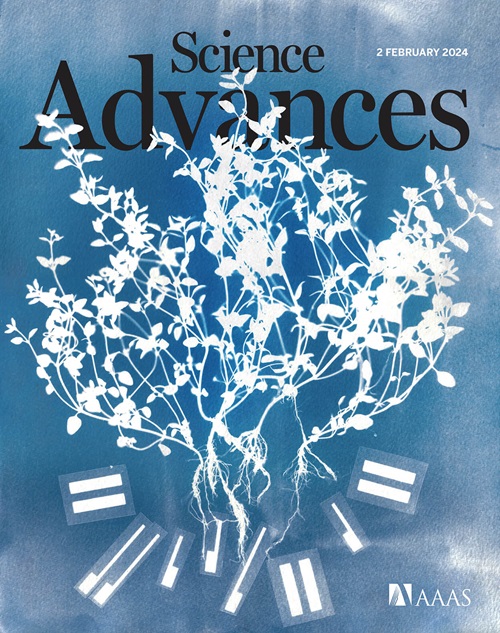Evidence for crustal brines and deep fluid infiltration in an oceanic transform fault
IF 11.7
1区 综合性期刊
Q1 MULTIDISCIPLINARY SCIENCES
引用次数: 0
Abstract
Although oceanic transform faults (OTFs) are ubiquitous plate boundaries, the geological processes occurring along these systems remain underexplored. The Gofar OTF of the East Pacific Rise has gained attention due to its predictable, yet enigmatic, earthquake cycle. Here, we present results from the first ever controlled-source electromagnetic survey of an OTF, which sampled Gofar. We find that the fault is characterized by a subvertical conductor, which extends into the lower crust and thus implies deep fluid penetration. We also image subhorizontal crustal conductors distributed asymmetrically about the fault. We interpret these subhorizontal anomalies as crustal brines, and we suggest that the high permeability of the fault combined with the influence of melt in the transform domain can promote hydrothermal circulation and brine condensation at OTFs.

求助全文
约1分钟内获得全文
求助全文
来源期刊

Science Advances
综合性期刊-综合性期刊
CiteScore
21.40
自引率
1.50%
发文量
1937
审稿时长
29 weeks
期刊介绍:
Science Advances, an open-access journal by AAAS, publishes impactful research in diverse scientific areas. It aims for fair, fast, and expert peer review, providing freely accessible research to readers. Led by distinguished scientists, the journal supports AAAS's mission by extending Science magazine's capacity to identify and promote significant advances. Evolving digital publishing technologies play a crucial role in advancing AAAS's global mission for science communication and benefitting humankind.
 求助内容:
求助内容: 应助结果提醒方式:
应助结果提醒方式:


